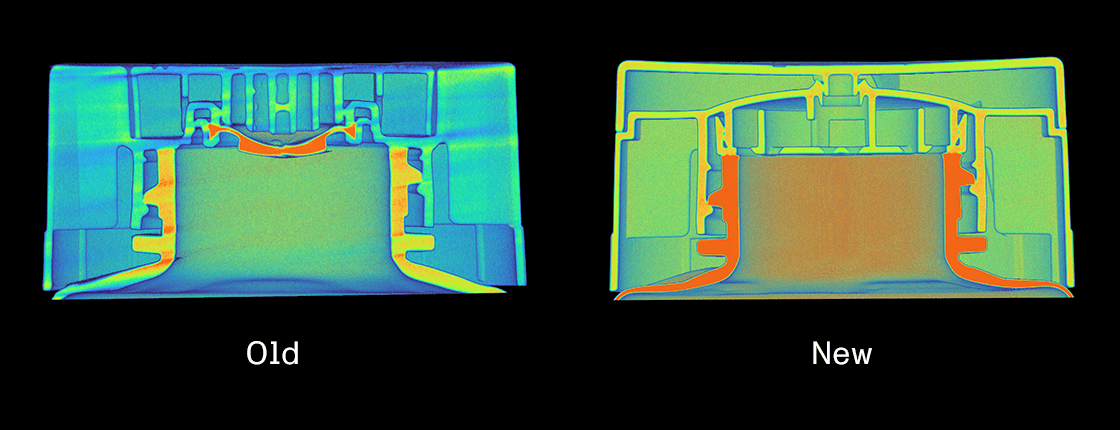
Millions of people squeeze ketchup out of bottles every single day. It’s such a common thing we barely even think about it. But inside the ketchup bottle (and specifically, inside its cap) there’s actually a lot of physics.
To illustrate this stunning physics, the tech research company Lumafield used X-ray CT scanners to examine what lies inside a Heinz ketchup bottle cap. For the past few years, the ketchup maker has partnered with a packaging company to create more sustainable plastics for their products. But this sustainability goal isn’t as straightforward as it sounds.
First, there’s the materials. You can’t just simply replace one type of plastic with another that’s more recyclable. Plastics are chosen for their flexibility, durability, and the ability to form a tight seal to prevent leaks and offer a constant flow rate. If you switch from plastic, even small changes can make a big difference. Besides, there’s also the cost: companies don’t want to make things more expensive.
The old cap featured a silicone valve. Silicone is technically recyclable, but it needs to be separated from plastic for recycling, and this never happened with the ketchup bottle, rendering the entire cap virtually unrecyclable. The new cap is made of polypropylene (PP), a type of plastic that is recycled at most facilities that process plastic. Silicone is durable, dense, and flexible, so the new PP valve needed to be able to do the same job.
To facilitate this, engineers created an intricate design featuring a complex mix of materials inside the ketchup cap. The CT scan shows materials in colors ranging from red to blue, depending on their density. Inside the cap, there’s an unknown dense plastic material, probably just denser PP.
The core of the design challenge, however, is making sure the design takes advantage of a key property of ketchup called shear thinning.
Shear thinning is a property of certain fluids that become less viscous (thinner) under applied stress, making them easier to stir or pump but returning to their original viscosity once the stress is removed. This means that ketchup requires a specific pressure to flow, and when you squeeze the bottle, you create enough pressure to move the ketchup through the outer channels. The wall separating the channels from the inner channels keeps the ketchup out so the necessary pressure can build up.
Then, once the squeezing stops, the viscosity retuns to normal, preventing drips and mess.
The sheer complexity and the innovative approach taken to redesign something as simple as the ketchup bottle show the surprising intricacies of modern product design — as well as the efforts required for cheap sustainability in packaging. But it also shows the power of human innovation. The meticulous work by engineers to balance the physical properties of polypropylene with the unique behavior of ketchup illustrates the potential for significant environmental impact through thoughtful design.
Was this helpful?



